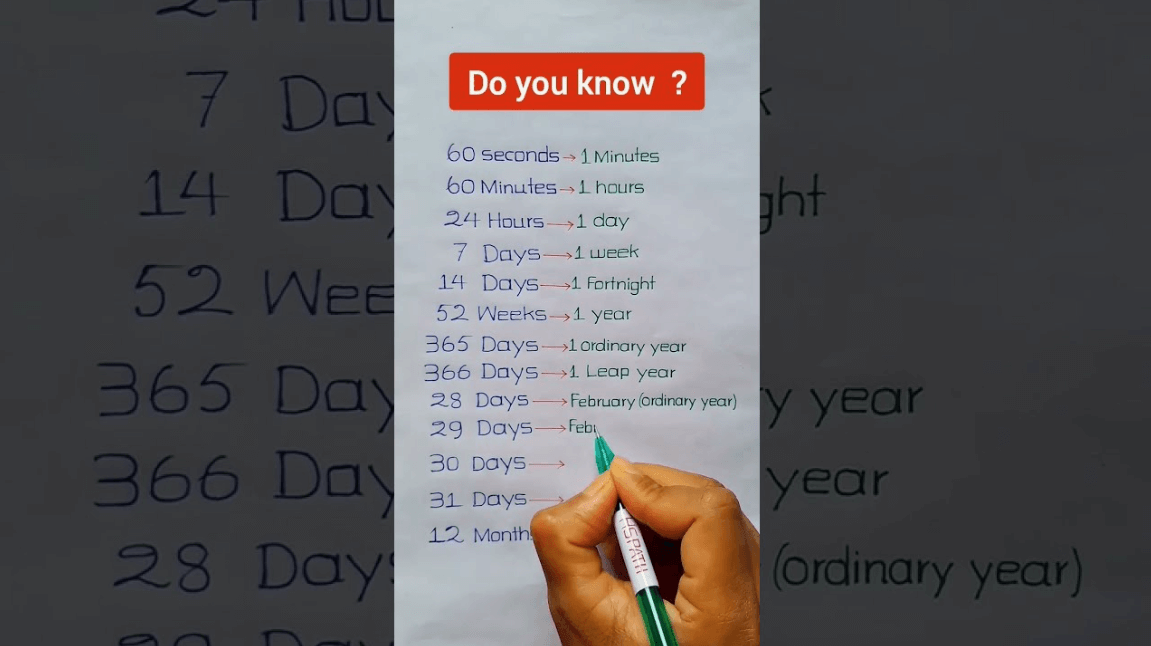How Many Hours in a Month?
When you’re trying to calculate time especially when planning tasks, scheduling or simply understanding how much time you have in a given month knowing the number of hours in a month is an essential piece of information. Whether it’s for budgeting, project planning or just satisfying your curiosity the number of hours in a month can vary depending on the number of days in that month.
Understanding the Basics: Hours in a Day and Days in a Month
To determine how many hours there are in a month, we must first understand the following two concepts:
- Hours in a Day: A standard day is made up of 24 hours.
- Days in a Month: The number of days in a month can vary. Some months have 30 days, some have 31 and February has either 28 or 29 days depending on whether it’s a leap year.
Formula to Calculate Hours in a Month
The basic formula for calculating the number of hours in a month is:
Hours in a Month=Days in a Month×24
Let’s go over how this formula works for different months of the year.
Non-Leap Year (Regular Year)
In a non-leap year, there are 365 days in total. Here’s a breakdown by month:
- January: 31 days × 24 hours = 744 hours
- February: 28 days × 24 hours = 672 hours
- March: 31 days × 24 hours = 744 hours
- April: 30 days × 24 hours = 720 hours
- May: 31 days × 24 hours = 744 hours
- June: 30 days × 24 hours = 720 hours
- July: 31 days × 24 hours = 744 hours
- August: 31 days × 24 hours = 744 hours
- September: 30 days × 24 hours = 720 hours
- October: 31 days × 24 hours = 744 hours
- November: 30 days × 24 hours = 720 hours
- December: 31 days × 24 hours = 744 hours
Total Hours in a Non-Leap Year
If you want to calculate the total number of hours in a non leap year (365 days), here’s how you’d do it:
365days×24hours/day=8760hours
So, in a non-leap year, there are 8,760 hours.
Leap Year
In a leap year, February has 29 days instead of 28, so the number of days in the year becomes 366. Here’s how it breaks down for each month:
- January: 31 days × 24 hours = 744 hours
- February: 29 days × 24 hours = 696 hours
- March: 31 days × 24 hours = 744 hours
- April: 30 days × 24 hours = 720 hours
- May: 31 days × 24 hours = 744 hours
- June: 30 days × 24 hours = 720 hours
- July: 31 days × 24 hours = 744 hours
- August: 31 days × 24 hours = 744 hours
- September: 30 days × 24 hours = 720 hours
- October: 31 days × 24 hours = 744 hours
- November: 30 days × 24 hours = 720 hours
- December: 31 days × 24 hours = 744 hours
Total Hours in a Leap Year
To calculate the total number of hours in a leap year (366 days), the formula is:
366days×24hours/day=8784hours
So, in a leap year, there are 8,784 hours.
Hours in a Month Based on Specific Days
While the above breakdown shows how many hours are in each month for regular and leap years, we can also understand the number of hours based on the exact number of days in each month. Below is a list of how many hours are in each month, depending on whether it’s a regular year or a leap year:
| Month | Days in Month (Regular Year) | Hours in Month (Regular Year) | Days in Month (Leap Year) | Hours in Month (Leap Year) |
|---|---|---|---|---|
| January | 31 | 744 | 31 | 744 |
| February | 28 | 672 | 29 | 696 |
| March | 31 | 744 | 31 | 744 |
| April | 30 | 720 | 30 | 720 |
| May | 31 | 744 | 31 | 744 |
| June | 30 | 720 | 30 | 720 |
| July | 31 | 744 | 31 | 744 |
| August | 31 | 744 | 31 | 744 |
| September | 30 | 720 | 30 | 720 |
| October | 31 | 744 | 31 | 744 |
| November | 30 | 720 | 30 | 720 |
| December | 31 | 744 | 31 | 744 |
Why Do the Number of Hours in a Month Vary?
The reason the number of hours in a month varies is simply because of the difference in the number of days across the months. Some months have 30 days while others have 31. February typically has 28 days except for leap years when it has 29. This is why we see variations in the total number of hours each month.
How Many Hours in a Month on Average?
If you’re looking for an average number of hours in a month, you can calculate it by dividing the total hours in a year by the number of months in a year. Here’s the math:
- Regular Year: 8,760 hours ÷ 12 months = 730 hours per month (on average)
- Leap Year: 8,784 hours ÷ 12 months = 732 hours per month (on average)
So, on average, there are 730 hours in a month in a regular year and 732 hours in a month in a leap year.
Practical Applications for Knowing How Many Hours Are in a Month
Knowing how many hours are in a month is useful in many aspects of life. Some of the key applications include:
1. Time Management
Understanding how many hours are available in a month can help with managing your time. It allows you to plan tasks, work schedules and leisure time efficiently.
2. Budgeting
For businesses and individuals, budgeting involves estimating how many hours you can dedicate to work or projects which can then be converted into income. Knowing how many hours there are in a month helps in estimating costs, setting up work hours and planning for expenses.
3. Project Management
When working on projects, knowing the number of hours in a month allows project managers to allocate resources effectively. Whether you are working on a large team or individually, knowing how many hours you have helps in determining deadlines and meeting goals.
4. Payroll and Billing
For businesses that calculate payroll on an hourly basis, it’s essential to know the number of hours worked in a month. Similarly, freelancers or contractors may calculate their rates based on how many hours they expect to work each month.
5. Understanding Leap Years
The leap year concept is critical in certain financial calculations and planning. For example, some interest calculations or subscriptions may need to account for the extra day in February.
Conclusion
In summary, the number of hours in a month varies depending on the number of days in that month. A typical month can have anywhere from 672 to 744 hours, depending on whether it’s a leap year or a regular year. By understanding how many hours are in a month, you can make better decisions about managing your time, finances and scheduling.
For more valuable information visit the website.

